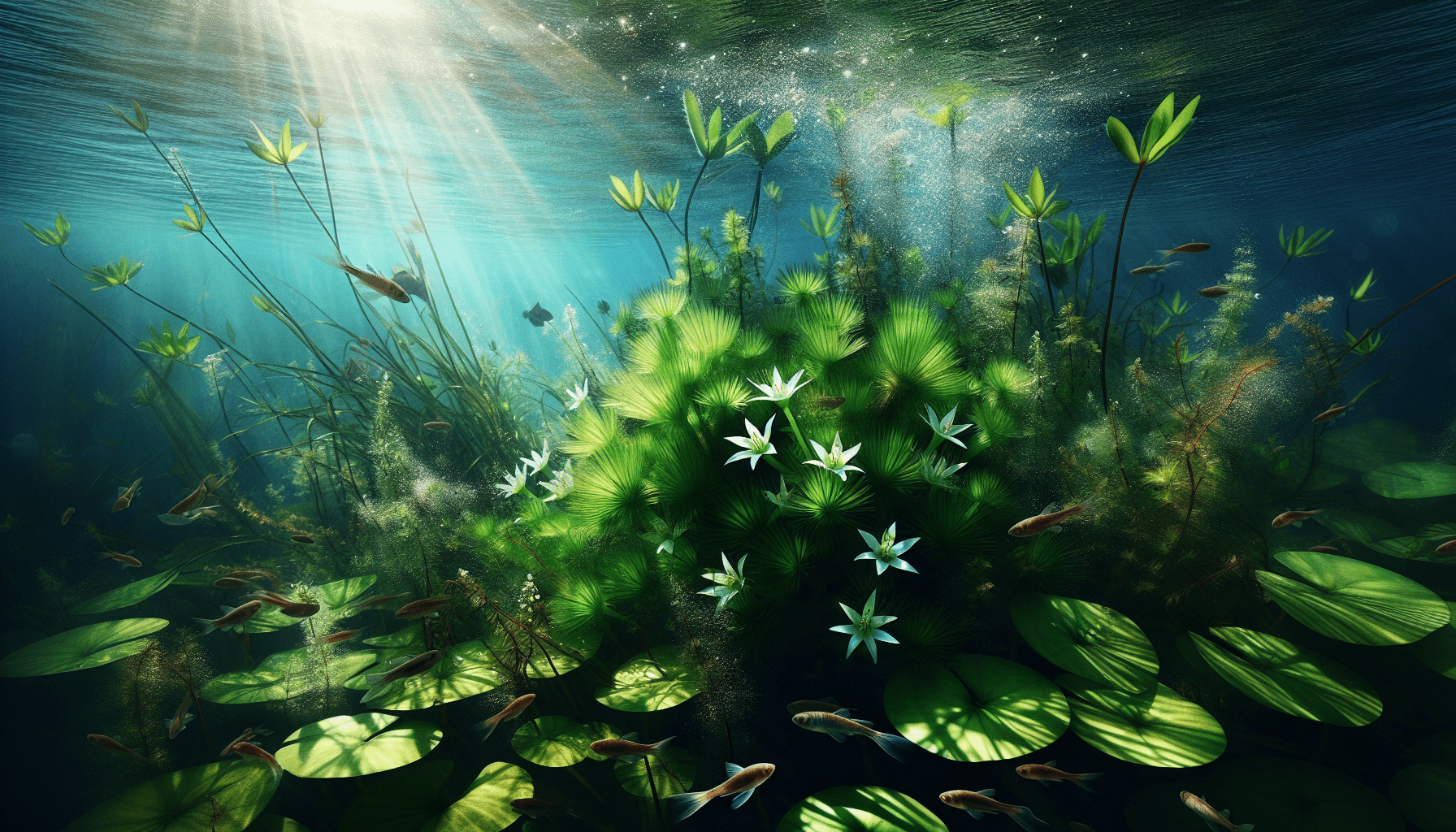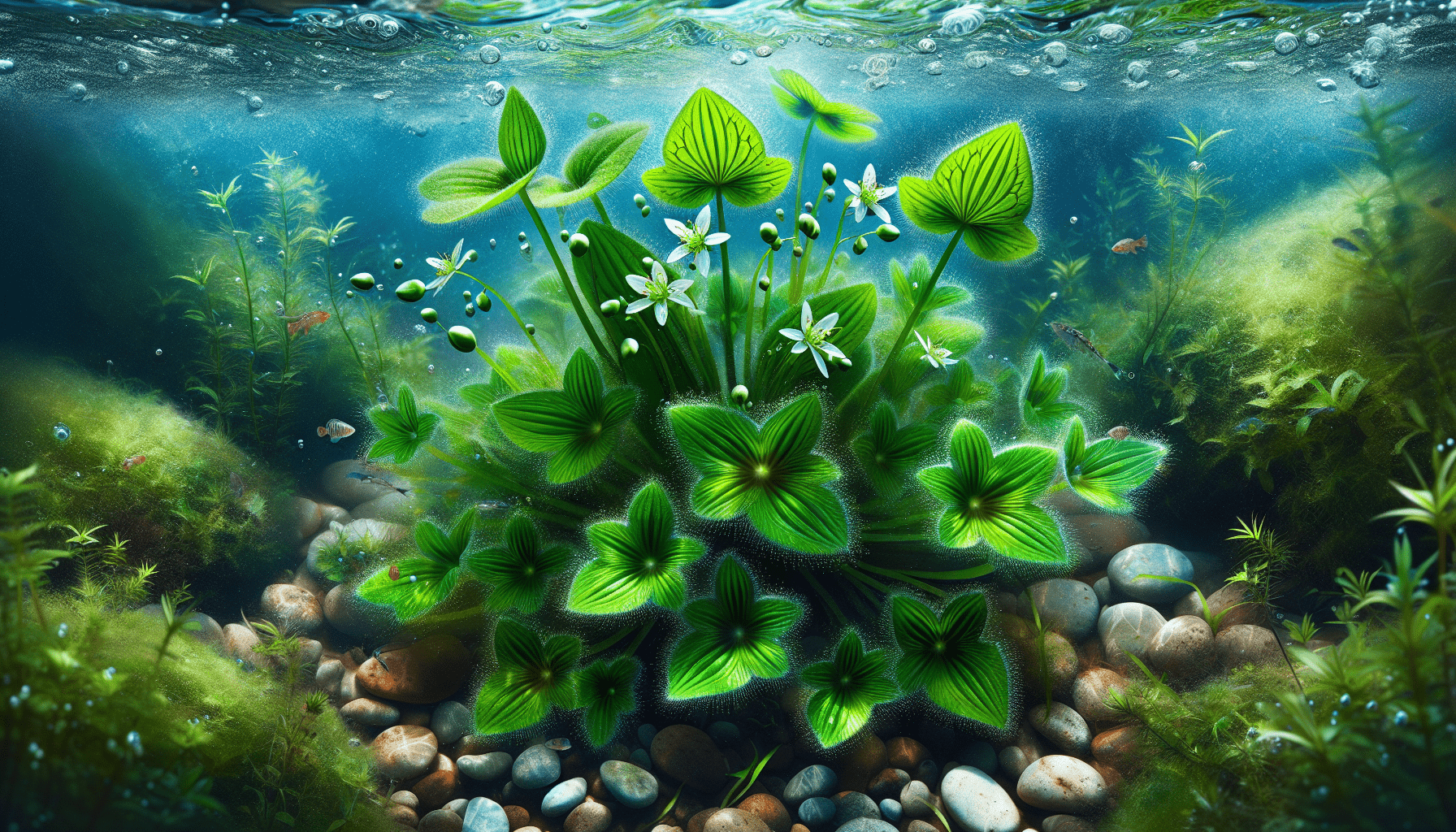In immersing yourself in the study of aquatic plant life, you may certainly encounter the curious entity known as Water Starwort. This article guides you to a profound understanding of what this plant is, outlining its characteristics, considering its aquatic habitat, and exploring its unique attributes. As you proceed, prepare to encounter a microcosm teeming with life and diversity, where the humble Water Starwort plays a pivotal role. Unravel the mysteries of this intriguing aquatic plant and learn how it contributes to the delicate balance of ecological systems under the water.

Overview of Water Starwort
Brief Description of Water Starwort
The Water Starwort is an aquatic flowering plant that belongs to the family Callitrichaceae and the genus Callitriche. As indicated by its name, the plant is characterized by its star-shaped or star-like flowers. The aquatic plant typically floats on the water, much like seaweed, and only comes to the surface when it’s time to bloom.
Natural Habitat and Distribution
Water Starwort is predominantly found in freshwater habitats, including ponds, rivers, lakes, and streams. They thrive in areas with calm or slow-flowing water and can exist in both extremely deep and shallow water bodies. The species is of subcosmopolitan distribution, and hence, can be found in significant parts across the globe.
Different Species of Water Starwort
Water Starwort exhibits a high degree of variation, which has led to the identification of numerous species under the genus Callitriche. This includes Callitriche stagnalis, commonly referred to as pond water-starwort, and Callitriche platycarpa, known as various-leaved water-starwort, among others.
Botanical Description
Plant Structure
The Water Starwort sports a rather simple structure. The plant consists of thin, floating foliage on the water surface. Depending on the species, the leaves range from being linear, oval to broadly winged.
The Root System
The roots of the water starwort are typically fibrous and are used to anchor the plant to the bottom of the water body. Concentrated towards the base of the plant, they form a dense mat in sediments and soils.
Leaves and Stems
The leaves, which take on a linear or oval shape depending on the species, enable photosynthesis. The stems are significantly flexible, enabling them to float on the water while reaching for the sunlight.
Reproductive Parts
The reproductive parts of the Water Starwort are its flowers which, as previously mentioned, adopt a distinctive star-like shape. Each flower contains either stamens or a single pistil, which contribute to the plant’s reproductive system.
Life Cycle and Reproduction
The Growth Period
The growth period for Water Starwort largely depends on the specific species and the conditions of its habitat. Typically, it starts growing in early spring and continues to proliferate throughout the summer months.
Reproductive Strategy
Water Starwort adopts both sexual and asexual modes of reproduction for survival. Sexual reproduction involves fertilization, culmination from the pistil’s interaction with pollen from the stamen. Asexual reproduction involves fragmentation, where new plants grow from fragment pieces of the parent plant.
Seed Dispersal
Seed dispersal in Water Starwort relies on water movement and the feeding habits of the waterfowl within its habitat. The seeds are highly resilient, capable of surviving in diverse environmental conditions and hence, successfully establish colonies.

Ecological Significance
Role in Ecosystem
Water Starwort serves as an essential contributor to the aquatic ecosystem. It offers vital habitat and food for numerous underwater creatures, including insects, fish, and waterfowl.
Interactions with Wildlife
Several water-dwelling creatures engage with Water Starwort, either as a source of nutrition or as a nesting ground. Moreover, many insects lay their eggs on this plant’s leaves, thereby contributing to their lifecycle.
Impact on Water Quality
Water Starwort plays a pivotal role in maintaining the quality of water in which it grows. The plant absorbs excess nutrients and toxins from the water, improving clarity and quality.
Cultivation and Care
Preferred Growing Conditions
Water Starworts prefer stagnant to slow-flowing water with sufficient sunlight exposure. Depending on the species, they can thrive in varying water temperatures, salinity levels, and nutrient availability.
Propagation Methods
Water Starwort can be effortlessly propagated through stem cuttings. It is also possible to collect seeds from mature plants for sowing in suitable growing conditions.
Pest and Disease Control
While Water Starwort is generally resistant to pests and diseases, it can still be affected by several conditions. The infestation of aphids and fungal diseases should be attended to ensure healthy growth.
Water Starwort in Aquascaping
Popularity in Aquariums and Ponds
Water Starwort is a popular choice among aquarium and pond enthusiasts due to its attractive appearance and easy maintenance. Its bright, vivid green hue enhances the aesthetic beauty of an aquatic setting.
Styling and Placement
In aquariums or ponds, Water Starwort can be placed either below the water or allowed to float on the surface. Its distinctive leaf shape and bird’s nest like structure make it an attractive feature plant in aquascaping.
Tips for Growing in Artificial Environments
Ample lighting and appropriate nutritional supplementation are necessary for Water Starwort to thrive in artificial environments. Periodical removal of dying or dead plants helps maintain hygiene and offers space for new growth.
Potential Uses
Medicinal Uses
Water Starwort has been used in traditional medicine to alleviate ailments like rheumatism or bladder infections. However, scientific research backing these uses is somewhat limited and ongoing.
Culinary Benefits
While not commonly consumed due to its sharp, somewhat unpleasant taste, Water Starwort can be boiled or steamed and consumed as a greens option, particularly in regions where it grows abundantly.
Other Potential Applications
Aside from medicinal and culinary uses, Water Starwort has potential applications in wastewater treatment due to its ability to absorb toxins and surplus nutrients from water.
Conservation Status
Current Conservation Status
The specific conservation status of Water Starwort varies by species and region; however, many species are not currently threatened considering their ubiquitous distribution and capacity to proliferate rapidly.
Threats to Water Starwort
The biggest threats to Water Starwort include habitat disruption due to human activities or climate change and the invasion of other competitive species in the same natural habitats.
Conservation Efforts
Efforts to conserve Water Starwort align with broader ecosystem preservation objectives, focused on maintaining biodiversity and preventing the degradation of freshwater habitats.
Interesting Facts about Water Starwort
Unique Characteristics
Unique features of Water Starwort include its vibrant green hue, its star-like flowers, its proficiency to grow under diverse environmental conditions, and its ability to aid in water quality improvement.
Historical Significance
Historically, Water Starwort has been utilized for diverse purposes from primitive cultures to medieval societies, reflecting its versatility and resilience in the face of changing environmental scenarios.
Fun Trivia
An intriguing trivia about water starwort is its intricate life-cycle involving two different types of flowers: one that floats on the water surface and another submerged underwater, a feature contributing to its extensive gene pool.
Comparing Different Species of Water Starwort
Differences in Appearance
Distinct species of Water Starwort exhibit different appearances, predominantly in terms of leaf structure and plant size. While some species have robust foliage, others contain thinner, more elongated leaves.
Habitat and Distribution Comparison
Some species of Water Starwort are restricted to specific locations due to their requirement for unique climatic conditions or water qualities. Others, however, exhibit a broader scope of distribution.
Variations in Uses
The diversity of species also leads to variations in potential uses. For instance, while some species might be preferred for culinary purposes, others might be more suitable for medicinal uses or water treatment applications.